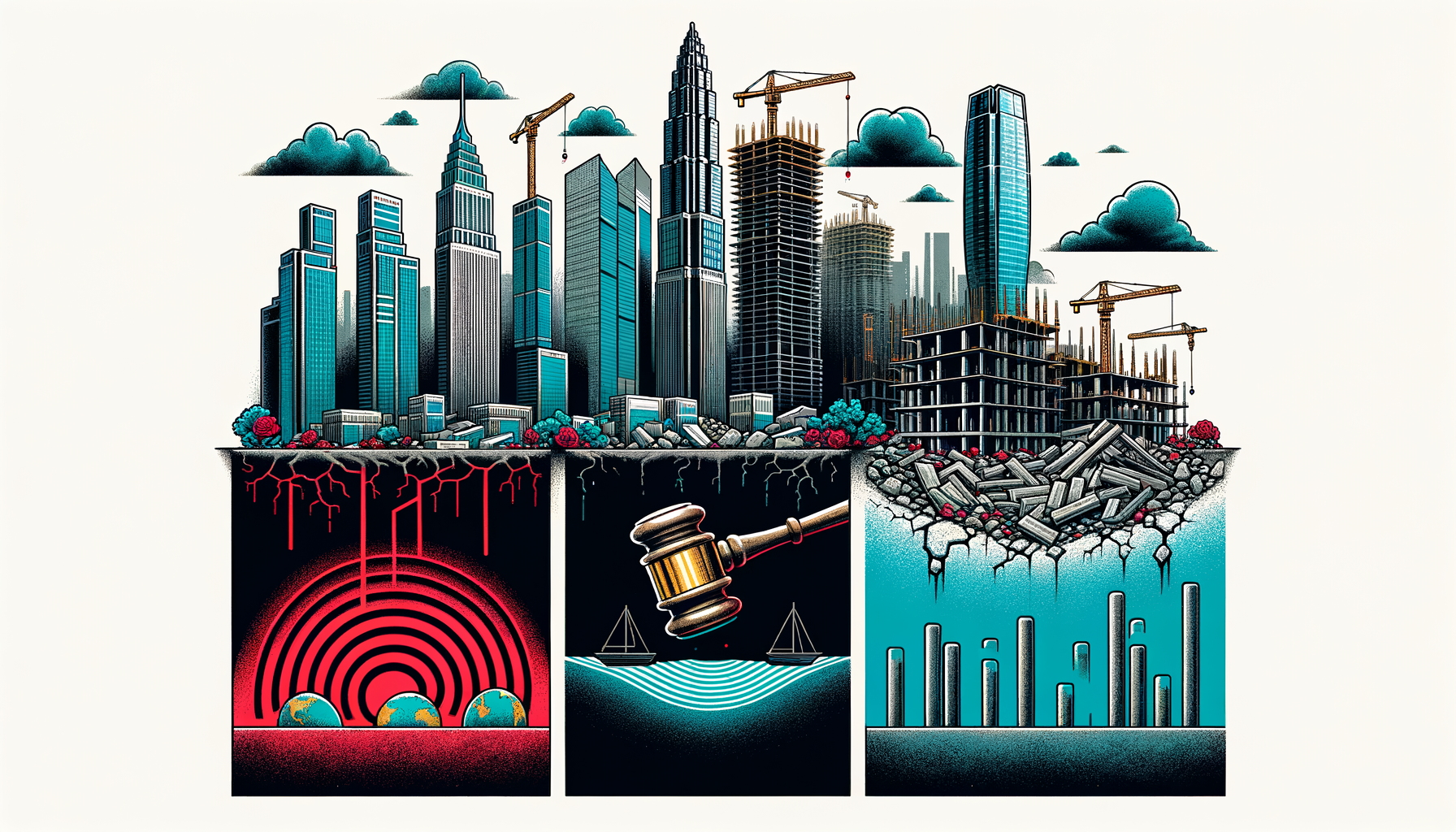“Decoding the Evergrande Liquidation: A Deep Dive into the Hong Kong Court’s Decision and its Financial Impact”
Issues surrounding China’s major real estate firm, Evergrande Group, have recently deepened, with significant consequences for the company’s future. The company’s share trading had been halted because of a ruling by a Hong Kong court to liquidate the firm’s assets. Over the previous months, the sector had been closely watched due to its potential to affect the global economy. This event now casts a greater shadow of uncertainty over the future of Evergrande Group and the impacts its demise could have on the international financial market.
Evergrande’s saga started over a year ago when the giant conglomerate’s financial difficulties became public. The company had amassed a crushing debt of over $300 billion, raising concerns not only for its investors, but also for the worldwide real estate industry. Putting that into perspective, Evergrande’s debt is so massive that it’s 2% of China’s entire Gross Domestic Product (GDP). The situation attracted attention from international economists concerned that a financial crisis on such a scale could stir a significant impact on the global economy.
In order to understand how Evergrande got into such a predicament, let’s go back in time to trace the company’s rise and the factors that led to its present financial woes. Evergrande Real Estate Group was founded in Guangzhou, China, in 1996. It grew aggressively, becoming one of the nation’s leading property developers. At its peak, the company was involved in over 1,300 projects across 280 cities, and its empire extended to electric vehicles, healthcare, and even a football team. The company’s aggressive growth strategy, heavily reliant on borrowing, initially paid off, leading to its substantial debt load.
The company’s financial stability began to waver when the Chinese government implemented a new policy known as “three red lines” in August 2020. This policy intended to curb the high debt levels of real estate developers by setting three financial metrics that the companies would have to meet. In simple terms, over-leveraged companies like Evergrande were suddenly facing complications in securing further loans.
Alongside the pressure of paying off its existing debt, Evergrande was also tied down by pre-sold properties. The company had made a habit of selling properties before they had been built – a common practice in China’s property market – leading to a future payment obligation for completed developments. These simultaneous pressures quickly evolved into a financial crisis for the company.
The situation escalated around mid-2021 when the company warned that it risked defaulting on its debts. To calm down the worried investors, the company promised to prioritize its real estate and other core business while selling non-core assets. But as China’s real estate sector slowed down, Evergrande found itself caught in a difficult cycle where it could not sell properties or other assets quickly enough to pay off its growing loan interests and project obligations.
In this context, the recent Hong Kong court decision comes as considerable blow to Evergrande. With the order of liquidation, the company’s shares have been suspended, creating an even higher level of uncertainty for shareholders and potential ripple effects across other global markets.
Whilst some might see the court ruling as a long-awaited resolute step towards handling the Evergrande issue, the process of asset liquidation also carries risks. The process will likely be arduous and complex, precisely because of the scale of Evergrande’s operations and the wide range of assets it holds. A hasty sell-off could potentially devalue the assets and exacerbate the situation. As the company’s assets are distributed, further economic impacts may be felt beyond China in the interlinked global marketplace.
There’s also the social aspect to consider. Evergrande’s fate directly influences many stakeholders other than investors. This includes the countless homeowners awaiting their pre-purchased, and yet-to-be-completed flats. The real estate giant’s downfall threatens to leave thousands of ordinary people potentially without the homes they’ve already paid for, precipitating a major housing crisis.
In conclusion, the Evergrande saga can be regarded as a case study for the potential risks and consequences of aggressive economic growth strategies. It’s a lesson about the dangers of high-risk financial behavior and the devastating impacts it can have not only on markets and shareholders but also on everyday people. It also underscores the interconnectivity of the global economy, showing how a real estate crisis in one country could potentially reverberate through markets worldwide.
However, it’s equally important to remember that the end isn’t necessarily in sight for the Evergrande crisis. There are plenty of questions yet to be answered about how the liquidation of Evergrande’s assets will be managed and what the ultimate impact will be on China’s economy as a whole. As the Evergrande situation continues to evolve, all eyes will remain on the affected markets and the consequences it will have for other players in the international financial community.

